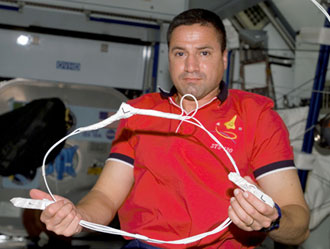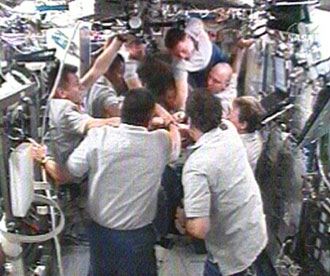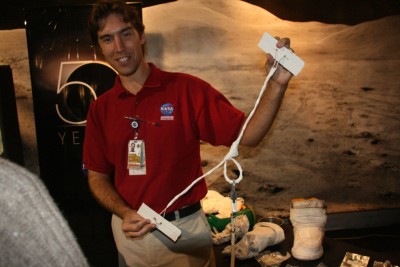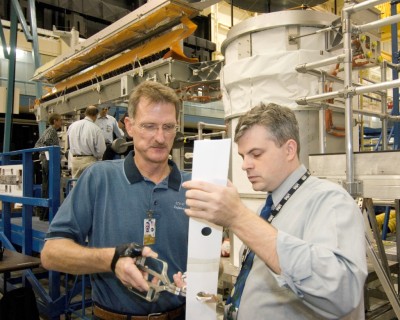 STS-120
STS-120
Report #22
Friday, Nov. 2, 2007 – 5 p.m. CDT
Mission Control Center, Houston, Texas
HOUSTON – Space shuttle Discovery and International Space Station crewmembers today finished preparations for Saturday’s spacewalk to repair a torn solar array. The mission’s fourth spacewalk is set to begin about 5:30 a.m.
The astronauts spent the day positioning the station’s mobile transporter and robotic arm at the end of the truss where it will serve as a base and “cherry picker” providing ample reach for the work to free a snag in a solar array panel.
As Mission Specialists Scott Parazynski and Doug Wheelock studied detailed plans for the spacewalk, other crew members assisted by insulating tools with Kapton tape to protect against any electrical currents.
Late in the crew day, the crew reviewed the procedures with Mission Control prior to going to bed. Parazynski and Wheelock will spend the night in the Quest airlock to prepare for the spacewalk focusing on the solar array repair.
As with other spacewalks during the mission, Saturday’s could begin early depending entirely on the crew’s final preparations that begin shortly after waking up at 12:38 a.m. Saturday.
The 6½ -hour spacewalk begins with Parazynski riding the robotic arm up to the damaged area of the array. He will be secured in a foot restraint on the end of the Orbiter Boom and Sensor System – the extension to the shuttle robot arm used for inspection of the orbiter’s thermal protection system.
Though this will be the first operational use of the OBSS to reach a worksite, the task was demonstrated during a spacewalk on the STS-121 mission in July 2006 to prove the boom could provide a stable environment for this type of work.
As Parazynski installs homemade stabilizers and releases the snag suspected of causing the tear in the array panel, Wheelock will assist from the base of the solar array. The distance from the station’s center is about 165 feet out on the truss and approximately 90 feet up to the damaged site.
If all goes as planned, the crew inside will then deploy the array half a bay at a time while Parazynski watches for any new complications. The spacewalk is scheduled to wrap up about Noon.
The astronauts should then be able to spend Sunday preparing to leave the station with Discovery’s undocking scheduled early Monday morning. Landing is set for just after Noon on Wednesday.
The next STS-120 status report will be issued Saturday morning or earlier if events warrant.




